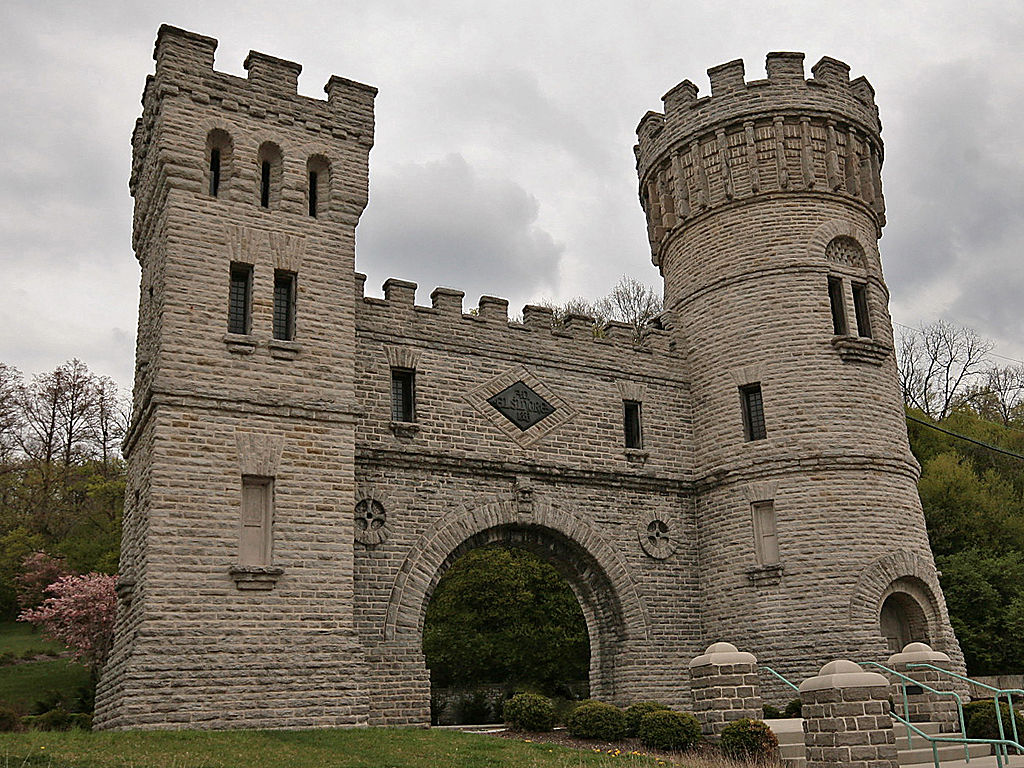
It’s time to vote in the #ELGLKnope Sweet Sixteen! Read about this matchup, and then submit your vote! One vote per email address, please. We’ll tally the votes and will post the next round of matchups on Tuesday!
Vote! Vote! Vote!
Elsinore Arch, Greater Cincinnati Water Works
Cincinnati, Ohio 45232
- Three words to describe Elsinore Arch, Greater Cincinnati Water Works: Historic, Unique, Hamlet
- Why are you nominating Elsinore Arch, Greater Cincinnati Water Works: Greater Cincinnati Water Works (GCWW) proudly nominates Elsinore Arch. Elsinore Arch (also known as Elsinore Tower) is a registered historic structure in Cincinnati, Ohio, listed in the National Register on March 3, 1980.In 1883, Cincinnati Water Works decided to extend its water supply main tunnel (which had remained incomplete for several years) 185 feet to the line at Gilbert Avenue. This main started at the reservoir in Eden Park. However, to control the flow of water at the base of the steep hill, a valve house was needed. Cincinnati Water Works wanted to enhance the landscape of the park and also wanted a structure that would also serve as a new entrance to the park – so they felt that the valve house needed to have a unique design.That spring, Cincinnati was host to the Shakespearean Dramatic Festival at Music Hall. The highlight of the festival was the performance of “Hamlet” (featuring Shakespearean actor James Edward Murdoch in the role of Hamlet; popular because Cincinnati was his hometown). The audience was highly impressed with the stage sets, especially the opening scene. This particular stage set was a 65-by-65 foot painting (painted by a local artist named Merry) of Elsinore Castle (aka Kronberg Castle), where the moody Denmark prince walked at night and spoke with the ghost of his father. In the audience that night was Water Works Superintendent A.G. Moore. He was so impressed with the painting of Elsinore Castle, that the next Monday morning, he took a newspaper illustration of the Elsinore stage set to the offices of Samuel Hannaford and Sons (a famous local architectural firm that also designed Cincinnati’s Music Hall and City Hall). Charles B. Hannaford, the son of Samuel, was commissioned to design the valve house in the form of Elsinore Castle. The Elsinore Tower was built later that year.
- Anything else to share? The building at Gilbert Avenue and Elsinore Place was constructed in 1883 for Cincinnati Water Works and was inspired by the Elsinore Castle, featured in “Hamlet.” The adjacent building was built with stonework similar to that used in the arch’s construction and was once the home of Cincinnati’s Natural History Museum. Today it is the home to WCPO-TV.

City of West Bend Well Houses
1115 S. Main Street, West Bend, Wisconsin 53095
- Three words to describe City of West Bend Well Houses: Innovative, Dedicated, Extraordinary
- Why are you nominating City of West Bend Well Houses: The City of West Bend Water Utility Department is deserving of the #ELGLKnope Award because of the exceptional innovation used to design, construct and maintain well houses that naturally blend into residential neighborhoods.In 1917, the City of West Bend developed its first municipal well house. The house had four square walls made out of concrete blocks and a flat wooden roof. Fast forward to 2006—you couldn’t ask for a nicer well house masquerading as a three-bedroom ranch than the one located in a quiet neighborhood in West Bend. The “well house” is next to existing residential homes, affording a great view from the front window. It has an attached garage, manicured lawn, shrubs and trees. As a house, it would sell for about $300,000 today, but it is an imposter. Instead of a residence, the structure houses the City’s No. 7 water well (photo above) and serves as a pumping station for municipal water. There are many other well houses that blend into the West Bend’s residential neighborhoods and help keep the city supplied with water.The idea of camouflaging the City’s pumping stations so they fit into the residential neighborhoods was promoted in the early 1960s by Alfred Hemauer, who held several city jobs simultaneously for 20 years, including Water Utility Manager. He wanted to avoid complaints that the pill-box brick buildings that typically house pumping stations would deflate property values. Once implemented, people began to come from all over the Midwest to see the plan. The staff of the Wisconsin Department of Natural Resources (WDNR) marveled at the idea and has gone on to use West Bend’s pumping station houses as positive examples for other municipalities.
- Anything else to share? The City of West Bend is truly proud of the Water Utility team’s ingenuity and ability to think outside of the box on well houses. Water Utility staff keep the pump stations as neat and clean as their own homes. The lawns are mowed, windows washed, and walls painted, when needed. Anyone driving through the neighborhood would never know one of these ordinary houses is a pumping station. Going forward, the Water Utility will continue to promote aesthetically-pleasing buildings that naturally blend into surrounding residential neighborhoods.

